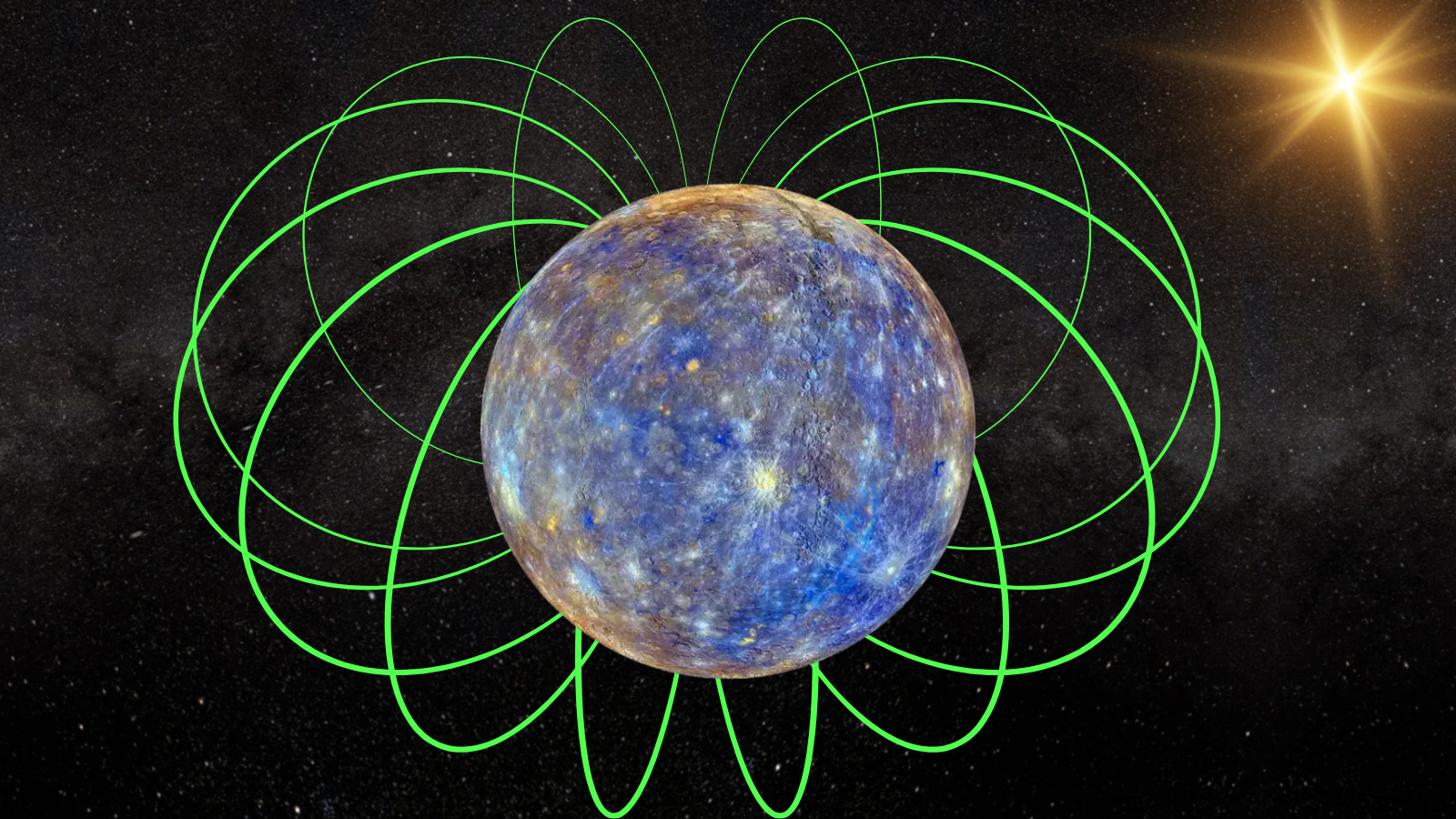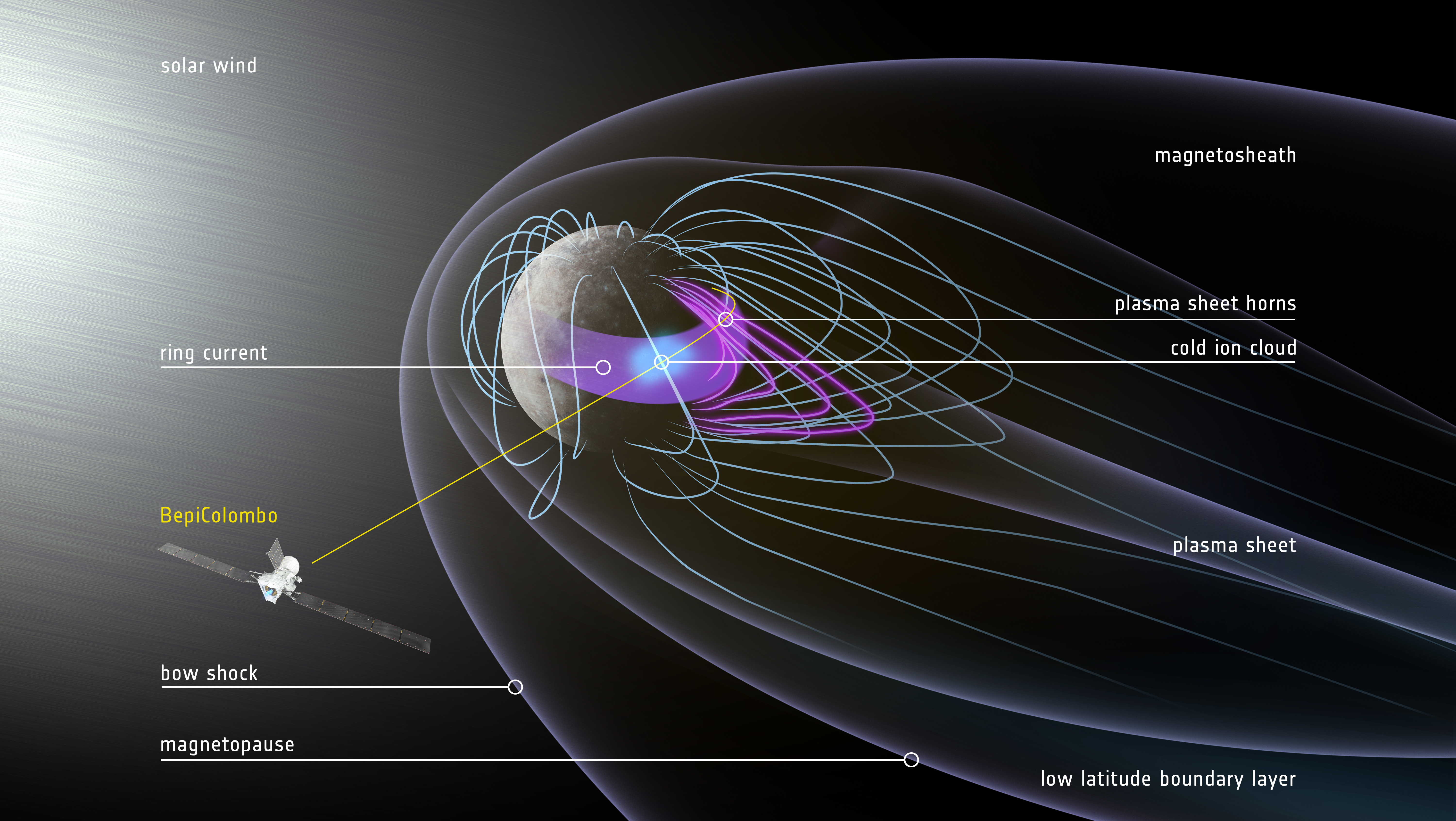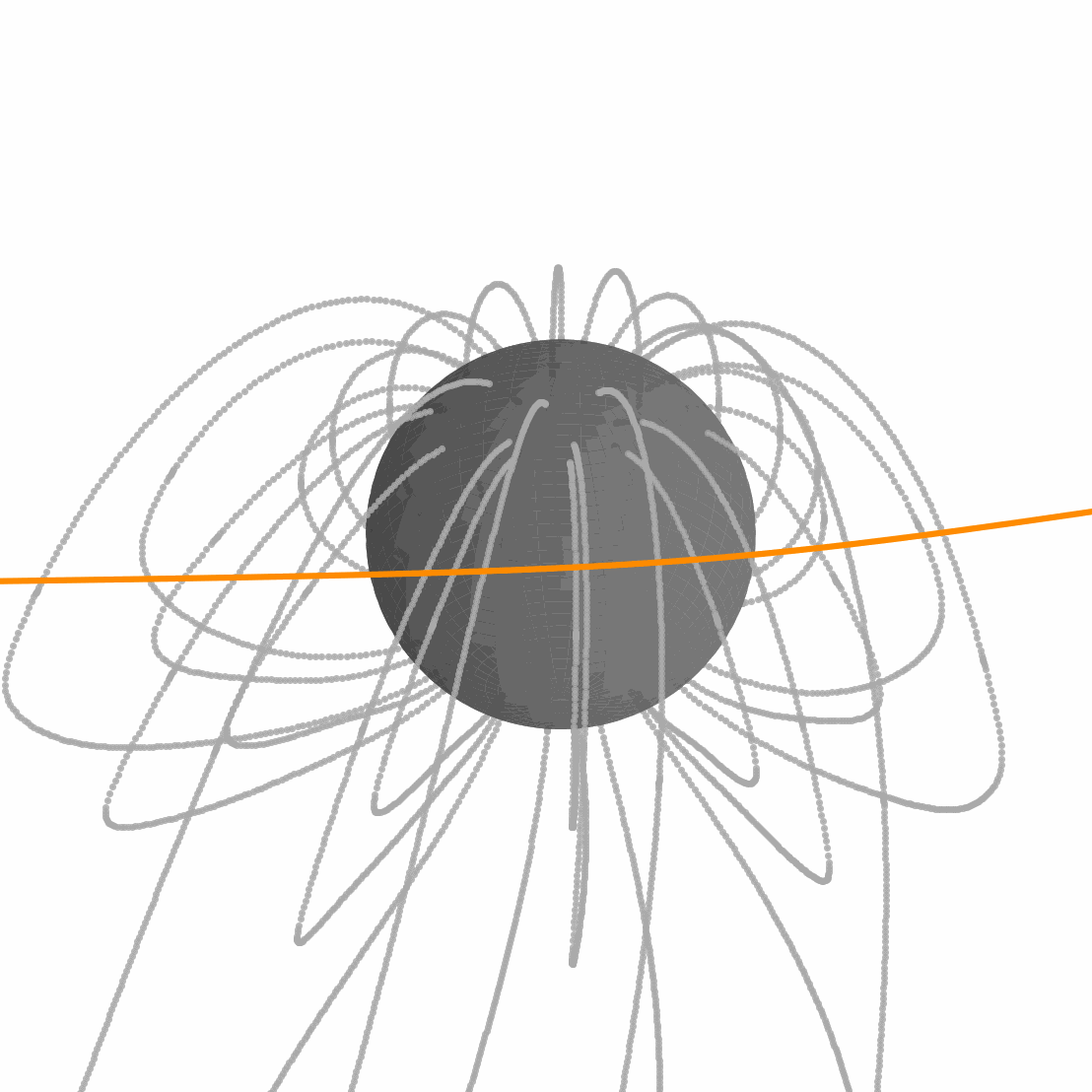BepiColombo spacecraft's flyby of Mercury begins unraveling the planet's magnetic mystery
"It's really exciting to start seeing the link between the planet's surface and the plasma environment."

The BepiColombo spacecraft may have only made rapid flybys of Mercury, but it is already helping to unravel mysteries surrounding the closest planet to the sun.
In 2026, a European Space Agency (ESA)/Japan Aerospace Agency (JAXA) joint mission will fall into orbit around Mercury, the solar system's smallest planet. However, to do that, the spacecraft first needs to make several flybys of Mercury, Venus and Earth. Fortunately, these flybys are proving invaluable to science.
During a June 2023 flyby of Mercury, BepiColombo encountered several characteristics of the planet's magnetic field. This field forms a protective magnetic bubble around Mercury and guards the planet against charged particles in the solar wind similar to how Earth's magnetosphere shields our planet — but scientists are curious as to why this tiny inner planet's magnetic field is much weaker than ours.
Because Mercury is much closer to the sun than Earth is — Mercury is average distance of 36 million miles (58 million kilometers) away from the sun while Earth is about 93 million miles (150 million km) away — its magnetic bubble experiences a far more intense pummeling from the solar wind.
One of BepiColombo's main tasks will be to investigate this interaction and the properties of Mercury's magnetic field. The spacecraft will build a dynamic dual-picture of the space environment around Mercury by separating into different units: the ESA-controlled Mercury Planetary Orbiter (MPO) and the JAXA-led Mercury Magnetospheric Orbiter (MMO).
Related: BepiColombo probe captures stunning Mercury images in closest flyby yet
Rapid flybys of Mercury are helping scientists establish the final orbit of BepiColombo, but these passes have also granted operators tantalizing hints at the sort of science the mission will deliver when truly in place. The six planned flybys are also providing glimpses of Mercury that wouldn't be possible from orbit.
Breaking space news, the latest updates on rocket launches, skywatching events and more!
"These flybys are fast; we crossed Mercury's magnetosphere in about 30 minutes, moving from dusk to dawn and at the closest approach of just 146 miles (235 km) above the planet's surface," Lina Hadid, from the Laboratoire de Physique des Plasmas at Paris Observatory, said in a statement. "We sampled the type of particles, how hot they are, and how they move, enabling us to clearly plot the magnetic landscape during this brief period."
Surprises in the magnetic bubble of Mercury
Hadid and colleagues conducted their research with the aid of BepiColombo's Mercury Plasma Particle Experiment (MPPE) suite of instruments, which were active during the June 2023 flyby (the third of six encounters between the spacecraft and its target planet).
The team combined the data collected by MPPE with computer modeling, revealing the origins of interacting particles and features of Mercury's magnetic bubble.
"We saw expected structures like the 'shock' boundary between the free-flowing solar wind and the magnetosphere, and we also passed through the 'horns' flanking the plasma sheet, a region of hotter, denser electrically charged gas that streams out like a tail in the direction away from the sun," Hadid said. "But we also had some surprises."
Using BepiColombo's Mass Spectrum Analyzer, which has been designed especially for the complex space environment around Mercury, the team saw a turbulent boundary where the solar wind meets the planet's magnetic field. This was indicated by a region of turbulent plasma with the highest energies ever seen at Mercury.
"We also observed energetic hot ions near the equatorial plane and at low latitude trapped in the magnetosphere, and we think the only way to explain that is by a ring current, either a partial or complete ring, but this is an area that is much debated," Hadid added.
Ring currents like the one she describes are generated when charged particles are trapped by magnetic bubbles around planets. Earth's ring current is located at an altitude of tens of thousands of miles over its surface. Mercury's magnetosphere is more compressed against its surface than that of Earth, which means it is a puzzle how its magnetic bubble can trap particles a few hundred miles above the planet, as the team saw.
The team also studied the direct interaction between charged particles in the solar wind as well as plasma around Mercury and BepiColombo itself. This process is complicated by the fact that when the spacecraft is facing the sun, it is heated and cooled, and heavier charged particles called ions can't be detected because BepiColombo becomes electrically charged and repels them.
However, when BepiColombo slips into the shadow of Mercury, cool ions in a sea of plasma become detectable. This allowed BepiColombo to see ions of the elements oxygen, sodium and potassium around Mercury. The team thinks these particles originated from the surface of the tiny planet and were launched into space by meteorite strikes or solar wind bombardment.
"It's like we're suddenly seeing the surface composition 'exploded' in 3D through the planet’s very thin atmosphere, known as its exosphere," MPPE instrument lead Dominique Delcourt, from the Laboratoire de Physique des Plasmas, said in the statement. "It's really exciting to start seeing the link between the planet's surface and the plasma environment."
"In this rare dusk-to-dawn sweep through the large-scale structure of Mercury's magnetosphere, we've tasted the promise of future discoveries," added Go Murakami, JAXA's BepiColombo project scientist, in the statement.
These findings emerge from the June 2023 flyby, meaning scientists still have data collected during last month's Mercury flyby to analyze. After this, BepiColombo will make its final two flybys of Mercury on Dec. 1 and Jan. 8, 2025, respectively.

Robert Lea is a science journalist in the U.K. whose articles have been published in Physics World, New Scientist, Astronomy Magazine, All About Space, Newsweek and ZME Science. He also writes about science communication for Elsevier and the European Journal of Physics. Rob holds a bachelor of science degree in physics and astronomy from the U.K.’s Open University. Follow him on Twitter @sciencef1rst.


